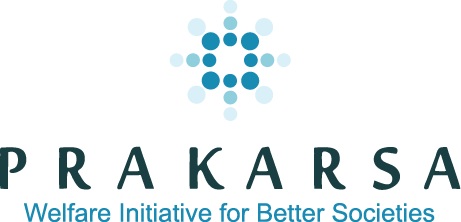This
is what the picture of Indonesia’s health sector for 2013 and several preceding
years looked like: malnutrition in rural and urban areas, the resurgence of
previously eradicated communicable diseases such as measles, diphtheria,
cholera, polio and leprosy; the widening gap of unequal health status, as
reflected in the higher number of both over-nourished children from the
upper-income segment and undernourished children from the low-income group, the
perpetual disparity between western and eastern Indonesia, and disparity within
provinces.
By the end of 2013, controversy emerged over the
significant increase in the maternal mortality rate, from 228 deaths per
100,000 live births in 2007, to 359 deaths per 100,000 live births, as revealed
in the results of the latest Indonesian Demographic and Health Survey (SDKI)
2012. Besides, preliminary data from the latest national Basic Health Research
(Riskesdas) 2013 substantiated the anecdotal news that health problems tend to
have worsened over the last decade.
What we witnessed in 2013 clearly indicates that
we are still far from achieving a healthy Indonesia. The apparently
deteriorating health outlook raises questions over whether the data is getting
more accurate, compared to previous studies and surveys, or if it is because
our quality of life is indeed getting worse.
Further, there is no simple answer to the
question of what is the reason behind Indonesia’s poor health performance? Health
problems are just a manifestation of many others — economic, environmental,
education and other sociocultural underlying causes. For example, bad eating
habits of poor families, which are due to poverty in a broader sense — lack of
money, lack of access, lack of knowledge, etc. — leads to mothers being
malnourished, posing higher risks of maternal deaths and reproducing children
more prone to nutritional problems and diseases, resulting in more low quality
and less productive human resources.
Investing in human development is therefore
critical. Our national social indicators show Indonesia is a poor performer
compared to other peer economies, indicating low investment in human
development. The latest available data (2007/2008) on public social spending
released by the Organization for Economic Cooperation and Development (OECD) in
2013, shows that if compared with other emerging economies, namely Brazil,
Russia, India, China and South Africa ( BRICS), Indonesia has an even lower
proportion compared to India, already the lowest in this club, and over five
times lower than Brazil, the most generous one.
If
OECD’s definition for social expenditure is “a measure of the extent to which a
country assumes responsibility for supporting the standard of living of
disadvantaged and vulnerable groups”, then this data shows Indonesia has been a
parsimonious state toward the welfare of its population, especially the
marginal ones. This figure should rise significantly in 2014, with the
implementation of the National Social Security System (SJSN).
Compared with other lowe middle-income countries
(LMICs) and neighboring East Asian and Pacific countries, our total health
expenditure remains below 3 percent of total gross domestic product (GDP),
unlike other LMICs and neighboring countries, where total health expenditures
have reached over 4 percent of their GDP.
While there is no formal threshold of how much a
country must spend on health, a frequently cited recommendation from the World
Health Organization (WHO) suggests 5 percent of GDP as “an indicator that
should be monitored”. A 2005 World Bank study on Ethiopia concluded that
additional health expenditure, more or less 1 percent of GDP, would reduce
child mortality rates and the lifetime risks of mothers dying by 30
percent.
With our high rates of child and maternal
mortality, there should be a strong political will to increase our national
health expenditure to at least 3.7 or 3.8 percent to make us closer to the
targets for child and maternal health, in line with the Millennium Development
Goals (MDGs).
Health is one of the 31 sectors in which the
management of devolved to the provincial and mostly the regental and municipal
levels since the dawn of decentralization over a decade ago. Law No. 36/2009 on
health stipulates that health budget allocation of the regional governments
(both at the provincial and regental levels) should be 10 percent of the local
budget (APBD), excluding salaries, and two-thirds of such allocation to be
expended on public services. However, many studies show that decentralization
does not necessarily improve health outcomes in Indonesia, in contrast with its
objective of bringing public services closer to the public.
Using the Public Health Development Index (IPKM)
developed by the Health Ministry, comprising 24 health indicators such as
nutritional status, access to health services and prevalence of various
diseases, evidently most of the regencies and municipalities with the
highest index spent more on health matters using their local budgets.
Seven out of 10 municipalities and regencies with
the best indexes have two digit percentages of their spending for health
compared to only two out of 10 districts with the worst index. As to why the
regencies of Asmat in Papua and Sukoharjo in Central Java have almost similar
spending rates at 9.5 and 9.7 percent, respectively, could have contrasting
indexes (rank 6 for Sukoharjo compared to rank 432 of 441 regencies and
municipalities for Asmat), might be explained by other factors such as
infrastructure, geographical and topography challenges, population density and
capacity of local governments to manage such budgets.
However, other factors that need to be put into
the equation are the presence and share of other types of budgets under
decentralization, such as specific allocation funds (DAK) and transfers from
the central government through deconcentration funds like health block grants
(BOK) and health assistance (Jamkesmas, Jampersal). The DAK are aimed at
achieving national health objectives. Most of the funds are used for physical
procurements such as medical equipment, drugs and medical infrastructure while
deconcentration is more for nonphysical development like technical assistance,
training and so on. The DAK requires co-funding from local governments (mixed
grants) and has rather rigid criteria. The regions have less discretionary
space with this DAK program.
In areas with low fiscal capacity, often the DAK
and deconcentration funds constitute the majority of the budget for the health
sector. The regional budget or APBD is mostly used for civil servants’ wages
and benefits. Many local governments find it hard to allocate the DAK for other
purposes, for instance to increase the number and distribution of health
workers, or to improve the quality of health workers in the field — the
spearheads of public health services.
Studies reveal the absence of clarity in
decentralization as the cause of the helter-skelter health sector. Researcher
Trisnantoro in 2009 pointed out that between 2000-2007, there had been no clear
pattern and relationship between fiscal capacity and health budget
allocation.
Regions with high fiscal capacity do not
necessarily allocate big health budgets, and do not necessarily have good
health outcomes either. Maksum in his 2011 study emphasized the fact that the
attempt to combine different decentralization philosophies, namely Anglo Saxon
and European-Continental systems, has caused chaos and overlapping
administrative authority, managerial confusion and unnecessary infusion of
politics leading to rent seeking and transactional relationships in government
budgeting. Health budgeting is no exception.
In dealing with these issues, there are at least
three recommendations for the national and local governments, budget wise, to
enhance our health performance in 2014 and
beyond.
First, the national government needs to
prioritize budget transfer to the regions with the lowest health status,
pairing them with close technical assistance to improve their managing
capacity. The regions must set the expected health status and amount of budget
required to achieve that. For instance, the regencies of Pegunungan Bintang in
Papua and Gayo Lues in Aceh need to identify which of the 24 health indicators
they must tackle to improve their health indexes to say, 0.4 or 0.5 over a
certain period of time.
Is it the high prevalence of undernourished
and malnourished children under five years of age? Or the low prevalence of
households with proper sanitation? What sort of services are the most effective
to tackle the problems? If nutrition is the issue, is it because of issues with
access, availability or utilization of food? Or is it more because of a
distributional problem? Is government-supported supplemental feeding or
promotions to improve knowledge and awareness of mothers more
appropriate? At the programmatic level, it is important to ensure that local
governments stay focused on achieving the set targets.
Second, there must be sufficient space and
flexibility for the regional governments to address their specific key issues
to improve their health statuses. While it is good to have budget programs like
DAK and deconcentration funds that aim to synchronize national targets
nationwide, the menu must not be set rigidly by the national government, at
least not at the activity or output level, but only at the outcome level.
For instance, the DAK are set mostly for
infrastructure, but not for recruitment of additional health workers or for
their incentives, which are more needed by a regency or municipality. Budget
for recruitment, wages and incentives are taken from other budget posts,
usually not under the authority of local governments. If the outcome is to
improve nutritional status, would it be more effective to educate mothers on
how to utilize locally available foods or to build therapeutic feeding centers
and the subsequent procurements?
Third, an emphasis must be given, again, to
improve local governments’ capacities to manage and implement health policies and
programs. What has mostly happened in Indonesia, in health, as well as in other
sectors, is a contradiction: most regions have low budget absorption, while
their health indicators are poor.
East Nusa Tenggara (NTT) province for
instance, is one of the provinces with the most health problems. Yet, the
absorption of the health budget was less than 50 percent of the allocation.
Lack of capacity of the local government to manage health programs and budget
must not cause a burden to the population that they have to serve. Identifying
gaps and areas for improvement in local governments will be the important first
step to improve their capacity. The role of the national government should also
be on facilitating cross-learning across the nation, because many regions have
been able to achieve good health outcomes.
Last but not least, it is important to bear in
mind that health statuses and outcomes are just the results of many other
factors. Infrastructure, environment, educational levels, culture and tradition
and so on remain the influential underlying causes of health problems. Synergy
with other sectors is a must to approach health problems holistically. Synergy
is also needed to close the gap between different regions in Indonesia. If the
regencies with the lowest health statuses are able to catch up in some
significant indicators, they will cumulatively narrow the health inequality
between regions. As such, all Indonesians will enjoy a healthy and high quality
life, not just those who live in certain regions and those who come from
certain social segments.
_______________
Victoria Fanggidae
The writer is a program and research manager at Perkumpulan Prakarsa (Center for Welfare Studies), Jakarta, and a postgraduate from the University of Melbourne’s Development Studies Program.



